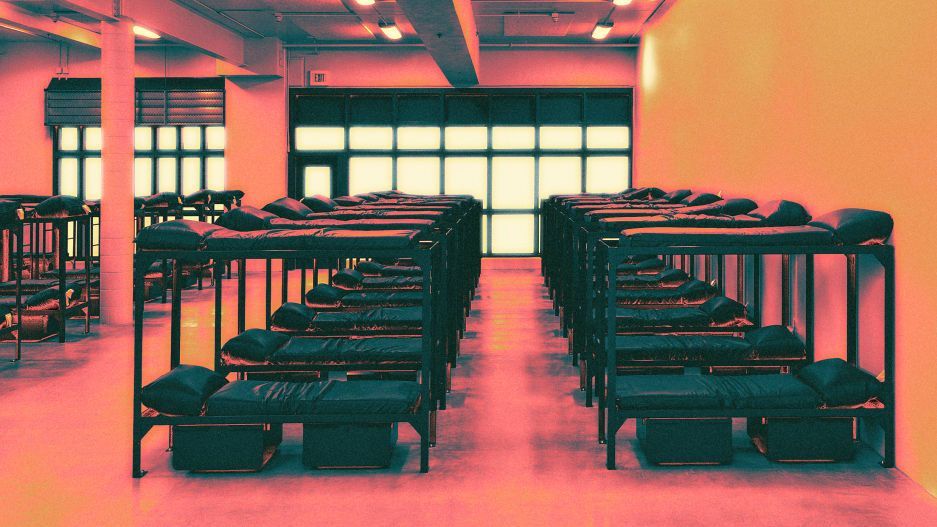Extreme Heat is Killing People In Prison - What's Being Done?
Officials are resisting advocate efforts to mitigate dangerous heat in prisons

As brutal heat waves engulfed large sections of the country on a consistent basis throughout the summer, hundreds of thousands of prisoners are being forced to endure deadly temperatures inside heat-retaining steel or concrete facilities that offer little, if any, access to air conditioning or circulation. With these conditions likely to worsen due to climate change, advocates are fighting to provide relief to incarcerated people who are now among the earliest and most vulnerable victims of this crisis.
Though the U.S. Constitution protects against “cruel and unusual punishment,” there is no federal mandate for prisons or jails to provide air conditioning or keep indoor temperatures below a certain level. As a result, facilities nationwide operate under an inconsistent patchwork of policies and practices that fails to protect the incarcerated. In some states, prison officials have resisted simpler measures to help prisoners combat the heat, including denying them access to ice, breathable clothing, cold water, and cool showers.
“Air conditioning at this point is no longer a privilege. It’s a right,” said Leah Wang, a research analyst with the Prison Policy Initiative and the author of a July 2023 report on the impact of climate change on incarcerated people. “Extreme heat and heat waves are killing people everywhere in prisons.”
Despite its notoriously hot summers, Texas is one of at least 44 states that does not offer universal air conditioning in its prisons. With more than 100,000 people in state facilities, Texas operates the nation’s largest state prison system. A total of 70 percent of units in its prisons are entirely or partially uncooled. Extreme heat in prisons has been an issue for years. In 2014, a University of Texas School of Law report found that inside Texas Department of Criminal Justice (TDCJ) facilities, the heat index during summer can exceed 149 degrees Fahrenheit (heat index measures how hot it feels, with humidity included; a heat index at or above 103 degrees Fahrenheit can lead to dangerous heat disorders like heat stroke or heat exhaustion with prolonged exposure). To this day, out of 99 TDCJ units in operation, only 30 have air-conditioning in all areas; 49 have air-conditioning in “some” housing areas, a TDCJ spokesperson says, and 20 have no air-conditioning in housing areas at all.
Earlier this year, Texas lawmakers finally appeared poised to take action when the state House committed to setting aside $545 million to install air conditioning in prisons. But the state Senate offered no money for the effort, even though Texas had a budget surplus of more than $30 billion. Ultimately, legislators budgeted $85.7 million for general deferred maintenance costs, some of which could be used for air conditioning. Advocates said the spending fell far short of the need.
Since then, dozens of incarcerated people have died due to cardiac-related or unknown causes in sweltering Texas prisons. Relatives of the deceased and civil rights groups have maintained that the heat triggered some of the deaths. State officials have consistently denied these claims. The Texas Department of Criminal Justice (TDCJ) has not classified a prison death as heat-related since 2012, even as research has shown that intense heat is associated with an increased risk of mortality behind bars, including due to heart disease and suicide.
In addition to air conditioning, advocates say prison officials can take simpler measures to help incarcerated people, including giving them lighter clothing and access to cold water and cooler, more frequent showers. But some officials have resisted even these modest measures. Advocates in Florida responded to this summer's record breaking temperatures this summer by lobbying the Florida Department of Corrections (FDC) to allow incarcerated people to wear shorts and plain white t-shirts. The standard Class A uniform consists of heavy long pants and a short-sleeved pullover shirt with a white t-shirt underneath. More than 80,000 are locked up in the state’s prisons.
Denise Rock, the founder and director of Florida Cares, a prisoner rights advocacy group, has called on officials to take additional no-cost or low-cost actions to address the heat, such as installing water misters on the prison grounds, lowering the temperature of showers, and permitting people to take multiple showers a day. “There’s a few counties in Florida where they have ordinances for temperature control for the dog shelters,” she said. “Yet those same counties don’t have ordinances for temperature control for the incarcerated.”
“This is a public health crisis,” said Wang, of the Prison Policy Initiative. “Our best public health strategy is to get people out of prison.” With a smaller incarcerated population, states can operate fewer prisons and focus on providing more humane conditions in those facilities.
You can read the briefing from Leah Wang's report "Heat, floods, pests, disease, and death: What climate change means for people in prison" at the Prison Policy Initiative website.










